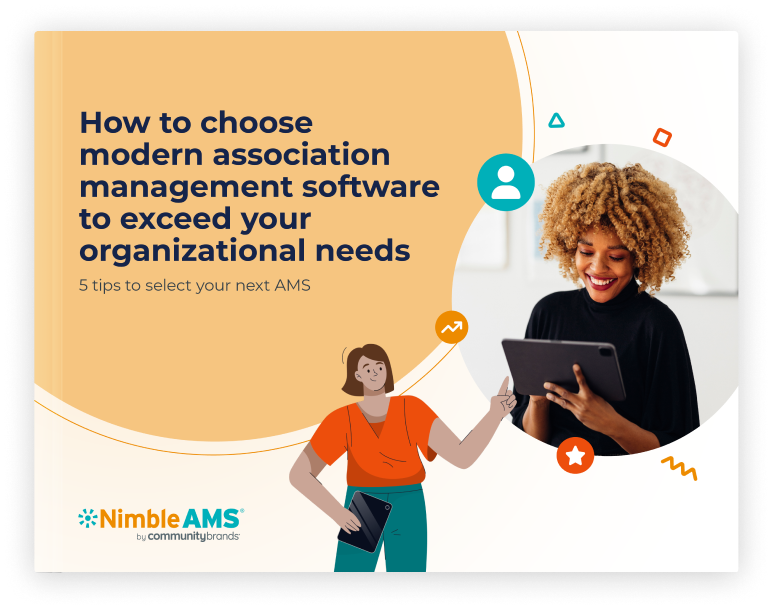Purchasing new association management software is an important decision for your organization. Before you choose your next platform, you’ll want to consider a variety of factors.
Our team is here to help during your research and purchasing process! Read our blog to discover four factors to consider before purchasing your next association management software.
What you need to know before purchasing new association management software
If it’s time for your organization to purchase new association management software (AMS), you’ll want to consider these important factors:
1. Your requirements
Before you begin researching new AMS platforms, it’s vital to consider what you need out of the technology. Ask yourself the following questions to get the ball rolling:
- Are you experiencing any organizational pain points? Think about your current system’s ease of use. Can your members update vital information in their member profiles? Does your staff have to complete a lot of manual tasks? Is your data siloed across different systems?
- Do you want your new system to improve any processes? Consider your membership join and renewal process. Is it easy for members to register for events and continuing education courses? Modern AMS can streamline processes with automation, freeing up your staff’s workload.
- What are your organization’s unique needs? Prioritize your AMS requirements by determining “must haves,” “nice to haves,” and “not important to haves”? Making a list of your requirements based on your association’s needs will help you decide which software is the easiest to implement and what AMS will take additional configuration.
2. Software upgrades
As you consider your next AMS, you’ll also want to think about product upgrades. Was your last software update costly and disruptive? You shouldn’t have to wait a full year or more between technology upgrades. A modern AMS should offer continuous delivery, providing automatic product updates throughout the year.
As you seek new software, ask yourself these questions to find the best fit:
- Does the new AMS offer free product upgrades?
- Will the software updates break our current system?
- Will we receive more than one update a year?
Finding an AMS that offers continuous software updates will ensure your association has access to the latest innovations and features.
3. Integration ability
To ensure your technology meets your unique organizational needs, you’ll want to consider how the AMS prioritizes integration and extensibility. Your next AMS should offer flexibility to integrate with other systems through robust application programming interfaces (API). API facilitates safe data exchange between your systems and streamlines the user experience with features like single sign-on (SSO).
Look for an AMS that offers the following API features:
- Documentation
- Support
- Ease of use
- JSON
- Performance
- Security
- Logging
- Business layer
- Error handling and retry capabilities
- Synchronous and asynchronous processing
- API limits
4. System scalability
Your association will continue to grow in the future, attracting new members, offering more benefits, featuring more events, and providing more continuing education opportunities. To support your organization’s long-term growth, you will need a scalable AMS.
As you search for your next AMS, you will want to consider if the new system will empower your organization to grow. Look for an AMS that is invested in these factors:
- Innovation. The platform should prioritize research and development, offering the latest technological features.
- Low total cost of ownership. Maximize your ROI with an AMS that offers Artificial Intelligence, automation, staff training opportunities, and more.
- Security. Look for an AMS that offers best-in-class security monitoring and protection. You’ll want a system that offers routine data backups and access to an in-house security and compliance team.
- Configuration. Your next AMS should allow system configurations with the latest functionality and easy to apply applications. New configurations shouldn’t break your system or stop working during a product upgrade.




